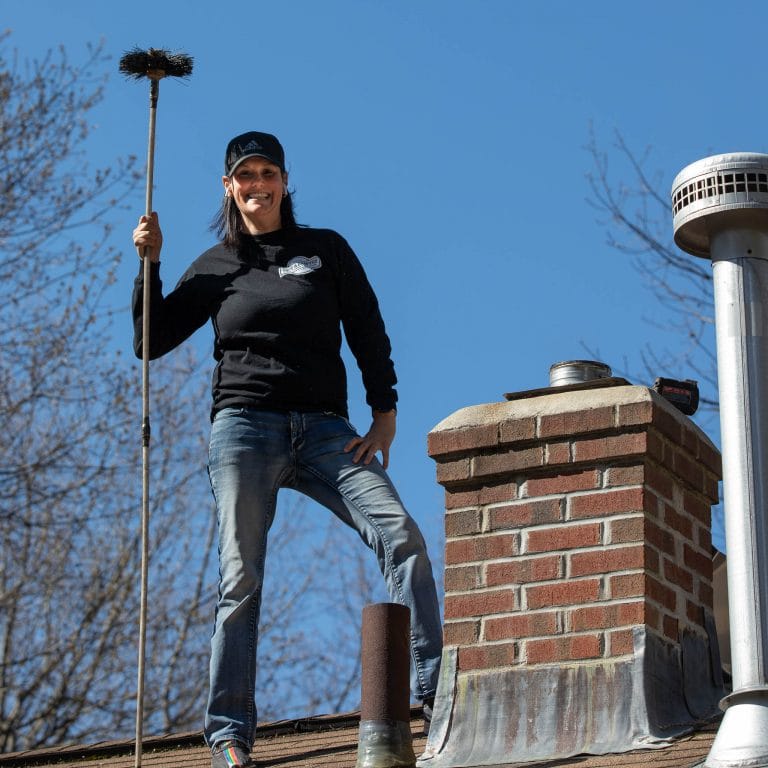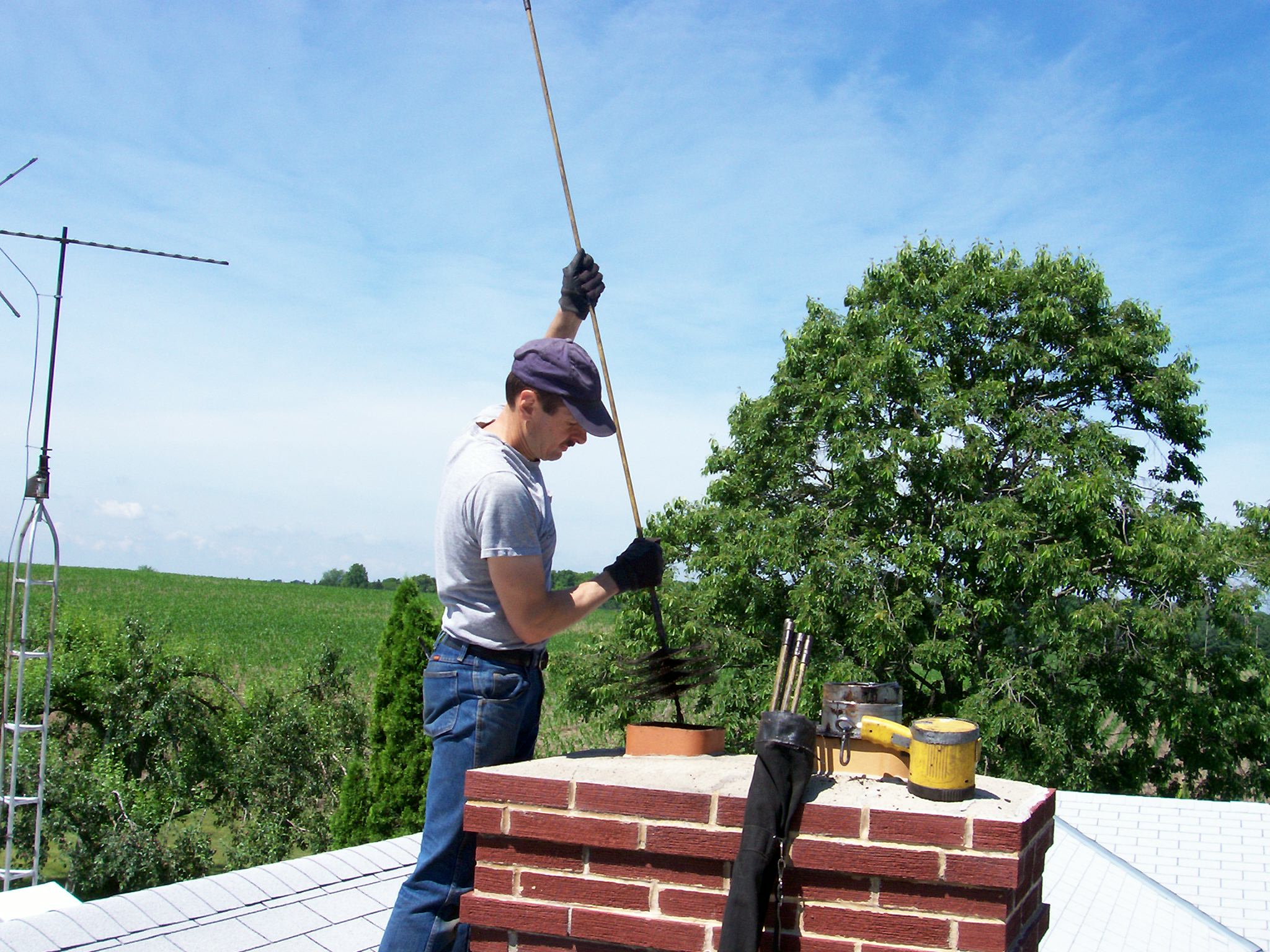Chimney Clean San Jose Excellence: Guaranteeing a Tidy and Effective Fire Place
Chimney Clean San Jose Excellence: Guaranteeing a Tidy and Effective Fire Place
Blog Article
Chimney Cleansing: A Step-by-Step Overview to Preserving a Healthy And Balanced Fire Place
Normal smokeshaft cleaning is a necessary component of this maintenance routine. By adhering to these standards, you will certainly discover exactly how to gather the required tools, perform a visual evaluation, clear debris and build-up, sweep the smokeshaft, and finish the final actions for continuous maintenance.
Collecting the Needed Tools
To begin the procedure of smokeshaft cleaning, the primary step is to gather all the necessary devices. Having the right tools handy makes certain a efficient and safe cleansing procedure. The necessary tools for chimney cleansing consist of a smokeshaft brush, a ladder, ground cloth or plastic sheets, a flashlight, gloves, and a dirt mask.
The chimney brush is the key tool made use of to remove soot and creosote build-up from the flue - Chimney Clean San Jose. It is essential to pick a brush that matches the size and shape of your smokeshaft.
A flashlight is vital for inspecting the chimney's inside for any kind of indicators of damages or blockages. Gloves are required to safeguard your hands from soot and various other harmful compounds, while a dust mask assists prevent the inhalation of particles.
Performing an Aesthetic Evaluation

Making use of a flashlight, very carefully take a look at the interior wall surfaces of the chimney for any type of signs of damages, such as cracks, loosened bricks, or mortar damage. These concerns can compromise the chimney's structural stability and present a significant safety and security risk. Furthermore, check for any kind of indicators of water damages, such as discoloration or efflorescence, as this can indicate a leaky chimney cap or blinking.
Following, examine the smokeshaft flue for any kind of obstructions. Seek the existence of nesting products, leaves, or debris that may have accumulated in time (Chimney Clean San Jose). These blockages can restrict air flow, increase the threat of carbon monoxide buildup, and prevent the smokeshaft's capacity to successfully vent smoke
During the aesthetic evaluation, pay attention to the smokeshaft crown, which is the leading surface area that safeguards the smokeshaft from dampness. Search for fractures or missing out on pieces in the crown, as these can permit water to enter the chimney and trigger considerable damages.
Cleaning Debris and Accumulation
After finishing the visual inspection, the following action in chimney cleansing includes clearing debris and accumulation to make sure the appropriate functioning of the fire place. Gradually, debris such as leaves, branches, and animal nests can gather in the smokeshaft, blocking the circulation of air and triggering potential fire hazards. Additionally, the build-up of creosote, a tar-like material, is a common problem in smokeshafts. Creosote is created when timber or nonrenewable fuel sources are melted, and if not gotten rid of regularly, it can bring about smokeshaft fires.
To clear particles and build-up, it is crucial to use the right devices and techniques. A smokeshaft brush, specifically made for this function, is made use of to eliminate loosened debris and creosote from the smokeshaft walls. It is vital to choose a brush that matches the dimension of your smokeshaft to guarantee reliable cleansing. Prior to beginning the cleaning process, make sure to cover the fire place open up to avoid debris from coming under the room.
To begin, insert the brush into the chimney and relocate it up and down, rubbing the wall surfaces to remove any type of debris or navigate to this site creosote. When the cleaning is full, make use of a vacuum cleanser or a chimney brush extension to eliminate the dislodged debris from the fire place.

Brushing Up the Smokeshaft
The sweeping of the chimney is a critical action in keeping a healthy fireplace. With time, residue, creosote, and other debris can accumulate in the smokeshaft, obstructing the flow of air and possibly creating a dangerous accumulation of combustible products. Routine chimney sweeper not just guarantees appropriate ventilation however likewise stops the threat of smokeshaft fires.
When it pertains to chimney sweeping, it is highly recommended to work with a specialist chimney sweeper. These professionals have the understanding and tools required to safely and properly get rid of the collected debris from your smokeshaft. They will commonly start by covering the fireplace to protect against any kind of soot or particles from entering your home. Utilizing specific Extra resources brushes and vacuum tools, they will certainly then cleanse the smokeshaft inside out, ensuring that all the build-up is completely removed.
It is very important to note that the regularity of smokeshaft sweeping relies on several elements, such as the kind of fuel utilized, the quantity of usage, and the sort of chimney. As a basic rule of thumb, it is suggested to have your smokeshaft brushed up and examined at the very least yearly.
Final Actions and Maintenance
After finishing the smokeshaft sweeping procedure, the very first step in the last upkeep is to inspect the smokeshaft cap and spark arrestor. These components protect against debris, pets, and rainwater from getting in the chimney.

Inspect the within the fire place for any kind of signs of deterioration, such as cracks, loose blocks, or harmed mortar. These concerns can affect the structural stability and safety and security of the fireplace. If any type of troubles are discovered, speak with an expert smokeshaft move or mason to address them immediately.
Ultimately, consider installing carbon monoxide gas detectors near the fireplace and throughout your home. These devices can spot the presence of this hazardous gas, giving an early caution system in case of a chimney breakdown. On a regular basis examine and replace the batteries in these detectors to ensure their effectiveness.
Conclusion
In final thought, adhering to a detailed overview for chimney cleaning is essential in preserving a healthy fireplace. By gathering the required tools, carrying out a visual evaluation, getting rid of particles and accumulation, and brushing up the smokeshaft, property owners can guarantee the safety and efficiency of their fireplace.
The essential tools for chimney cleaning consist of a smokeshaft brush, a ladder, decline cloths or plastic sheets, a flashlight, handwear covers, and a dirt mask.
A smokeshaft brush, especially made for this function, is utilized to eliminate loose debris and creosote you could look here from the smokeshaft wall surfaces. Routine smokeshaft sweeping not only ensures correct ventilation yet likewise prevents the risk of chimney fires.
When it comes to smokeshaft sweeping, it is highly advised to hire a specialist chimney sweep. After finishing the chimney sweeping procedure, the first step in the last maintenance is to check the chimney cap and stimulate arrestor.
Report this page